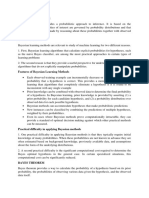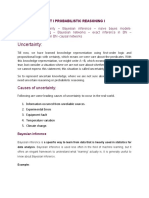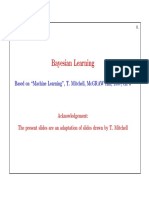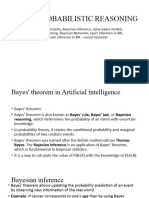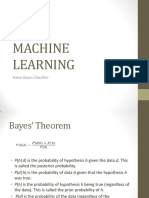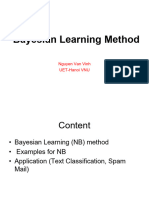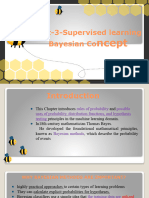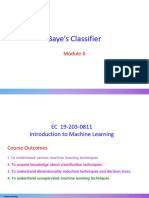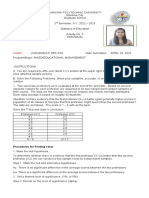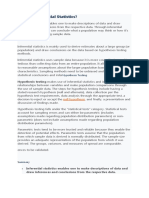0% found this document useful (0 votes)
17 views37 pagesLecture 5 Bayesian
The document outlines the principles of probabilistic learning, focusing on Bayesian learning and Naïve Bayes classification. It explains how Bayesian classifiers utilize Bayes' theorem to determine the probability of a given sample belonging to a particular class, and discusses the advantages and disadvantages of Naïve Bayes classifiers. Practical examples illustrate the application of these concepts in classification problems.
Uploaded by
imranCopyright
© © All Rights Reserved
We take content rights seriously. If you suspect this is your content, claim it here.
Available Formats
Download as PDF, TXT or read online on Scribd
0% found this document useful (0 votes)
17 views37 pagesLecture 5 Bayesian
The document outlines the principles of probabilistic learning, focusing on Bayesian learning and Naïve Bayes classification. It explains how Bayesian classifiers utilize Bayes' theorem to determine the probability of a given sample belonging to a particular class, and discusses the advantages and disadvantages of Naïve Bayes classifiers. Practical examples illustrate the application of these concepts in classification problems.
Uploaded by
imranCopyright
© © All Rights Reserved
We take content rights seriously. If you suspect this is your content, claim it here.
Available Formats
Download as PDF, TXT or read online on Scribd
/ 37
